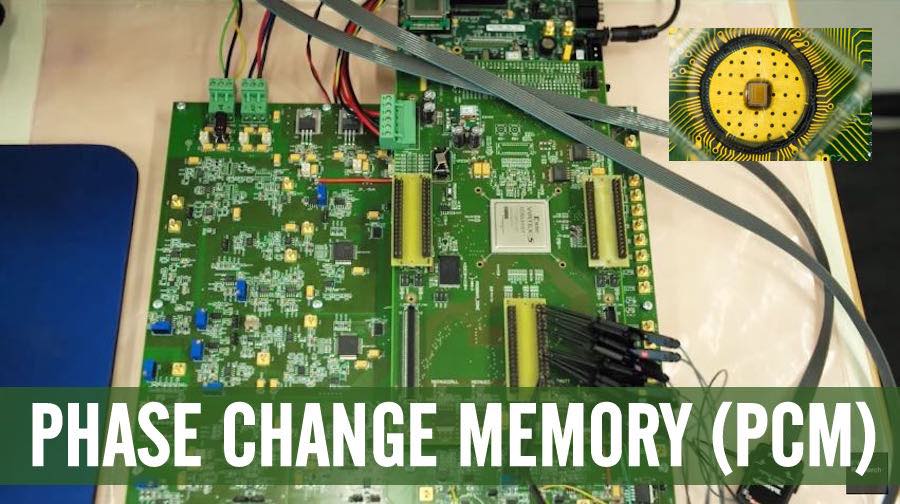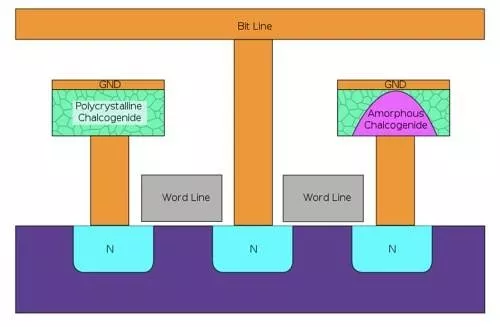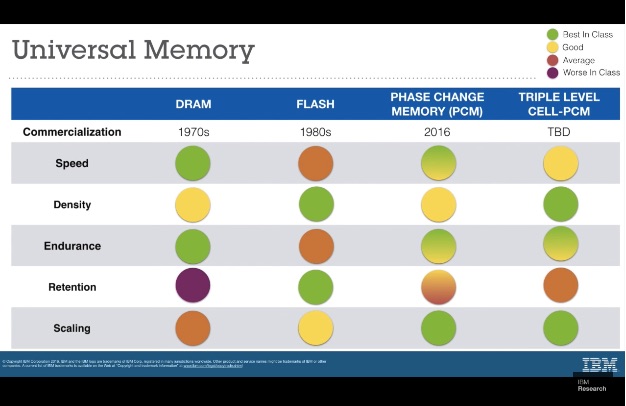What Is Phase Change Memory? Why Is It 1,000 Times Faster Than RAM?

 Short Bytes: The researchers are working hard to create new means to store data. PCM, about 1,000 times faster than RAM, is one such effort that’s being extensively developed by researchers and tech giants. Recent developments by Stanford and IBM are expected to make PCM research more mainstream.
Short Bytes: The researchers are working hard to create new means to store data. PCM, about 1,000 times faster than RAM, is one such effort that’s being extensively developed by researchers and tech giants. Recent developments by Stanford and IBM are expected to make PCM research more mainstream.
We know that volatile RAM is much faster, but costlier, in comparison to the nonvolatile storage. That’s why we need to take care of different factors like speed, cost, and retention when we choose a memory for some task. For years, researchers have been working to create a nonvolatile memory option that is faster than the NAND flash and offers longevity, better power characteristics, and higher densities.
Whenever such alternatives are discussed, we often talk about the phase change memory (PCM). Earlier this year in May, IBM researchers announced a big breakthrough that gave them a way to store up to 3 bits of data per memory cell. In this field, the earlier achievement was limited to 1 bit data per cell.
Now, a new research at Standford has shown that the phase change in PCM can begin to take place on the picosecond timescale. This makes PCM thousands of times faster as compared to conventional RAM which operates on nanosecond timescales.
How does phase change memory (PCM) work?
As the name suggests, PCM keeps shifting between two states. These states are an amorphous state (high resistance) and a crystalline state (low resistance). If this phase change takes place more quickly, we’ve got an even faster phase change memory.
The transition between these phases takes place by controlled heating and cooling. While PCM can be reprogrammed at least 10^6 times, its performance and price falls between DRAM and Flash.
The recent Stanford research found that exposing PCM to a 0.5THz electric pulse for picoseconds creates crystalline filaments that can be used to store data. The creation of this measurable state also means that PCM can close the latency gap with CPUs.
This research shows that transformation from zero to one (amorphous to crystalline) by one picosecond excitation means that PCM can store data many times faster than RAM.
Here’s what researchers have to say about this futuristic memory:
For more information on this research, you can visit Standford’s news website.
Did you find this article interesting? Don’t forget to drop your feedback in the comments section below.
Also Read: NVIDIA Launches Titan X — Its Most Powerful Graphics Card With 12GB Video RAM






